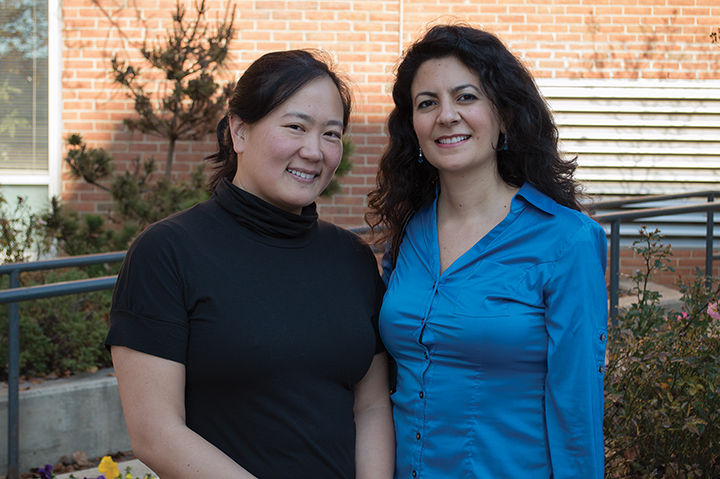
Theresa Kim (left) and Rada Dagher (right) pose for a portrait in front of the School of Public Health Building.
In the United States, about 51 percent of pregnancies are unintended.
And, University of Maryland researchers found, that rate is higher in minority groups than among white women, with an unintended pregnancy rate of 63 percent among black women and 48 percent among Hispanic women, compared to a 42 percent rate for white women. Their study, published in the American Journal of Preventive Medicine in November, reveals some of the factors that contribute to this trend.
“The idea behind the study was to show what are the contributing factors of Latina women and African-American women experiencing the greater burden of unintended pregnancy,” said Rada Dagher, a health services administration professor in the public health school. “We wanted to look at what it is that contributes to those differences.”
READ MORE: University of Maryland researchers study language development in children
To analyze the disparities, researchers studied data from the National Survey of Family Growth from 2006 to 2010 and examined 3,557 pregnancies. Of those, 28 percent of the women involved were black, 27 percent were Hispanic and 45 percent were white.
For Hispanic women, factors in the higher rate of unwanted pregnancies included not being born in the United States and not having a bachelor’s degree, Dagher said. For black women, the factors researchers identified were low income levels, having public insurance and the respondent’s mother being 25 years or younger when she had her first child.
Age and marital status also played a large role, said Theresa Kim, a doctoral student in the public health school. According to her team’s research, Hispanic and black women were more likely than white women to be younger than 20 and single at the time of unintended conception, she said.
“We know that minority groups have worse health outcomes in general than white people,” Dagher said. “From a public health perspective, it’s important to look at these kinds of disparities and figure out why this is happening.”
READ MORE: UMD researcher finds stress causes decline in black immigrant health
And once people understand the reasons behind these disparities, they can potentially come up with interventions to help address the problem, Kim said.
Unintended pregnancy is related to a range of negative outcomes, including stress, depression and adverse behaviors, said Sandra Hofferth, a family science professor who was not involved with this study.
“If we found out what’s associated with these differences … it could help us in the long run to reduce these unintended pregnancies and figure out strategies to address these issues on a broader level,” Hofferth said.
This study points to specific at-risk groups, Dagher said, namely young, uneducated women who are unmarried and were not born in the United States. This kind of information could be used to help target those groups for intervention and awareness efforts, she said.
READ MORE: Study finds possible link between ‘Sesame Street’ and school success
“It’s vitally important that women have access to contraception or access to comprehensive sex education,” Kim said. “And if they do become pregnant, that they also have access to prenatal care or other services that can help improve their health outcomes.”
CORRECTION: Due to an editing error, a previous version of this story stated that having public health insurance was a factor for the higher rate of unwanted pregnancies among black women. Having public insurance is a factor, not public health insurance. The article has been updated.



